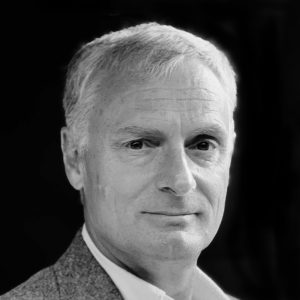The days of thinking wholly in terms of traditional asset classes when it comes to portfolio construction may have been numbered for some time; in Australia, the Future Fund’s statement of investment policies, when it started its investing life in July 2007, was perhaps the first sign that there could be a new way of thinking, with the usual categories of equities and debt securities subordinated to a distinction between “tangible” assets (defined as property, infrastructure and utilities, in listed or unlisted form); “alternative” assets, considered to include a range of risk premiums (for example, commodities and futures and insurance-based strategies); and skill-based absolute-return investments, or “intangible” assets.
The COVID-19 pandemic is fostering an even newer look at portfolio construction, says Amundi Asset Management, with the extreme environment stressing the weaknesses of the traditional Strategic Asset Allocation (SAA) model and bringing a more agile Total Portfolio Approach (TPA) into play. Amundi says the pandemic is reinforcing the trend of moving toward a TPA-style investment framework, to enable asset owners to “better apprehend the complex environment” driven by the COVID-19 situation.
In a piece written by Eric Taze-Bernard, chief allocation advisor, and Matteo Germano, head of multi-asset, Amundi contends that the current crisis is “probably marking a paradigm shift in financial markets” as important as the change in US monetary policy brought in by former Federal Reserve Chairman Paul Volcker at the beginning of the 1980s, which led to a long period of disinflation, lower interest rates and high asset returns.
The new equilibrium, brought about by the Covid-19 crisis, will be very different from the one we were used to in the last decade, say Taze-Bernard and Germano. “In addition, the frontiers between monetary and budgetary policies are being blurred and ballooning budget policies are likely to lead to some form of debt monetisation later on. As a result, we are probably entering a new regime, one characterised by a higher probability of inflationary scenarios and increased asset volatility,” say the Amundi pair.
“This means investors need to question long- accepted risk and correlation patterns and it calls for agility on their part. Moving to TPA as a holistic, essentially goal-based, total return-oriented and flexible approach is one way to adapt the institutional portfolio construction framework to this new environment.”
Three arguments are in favour of this method, say Taze-Bernard and Germano. The first is allocating along factors.
“One well-recognised feature of TPA is its focus on factors rather than the traditional segmentation of the investment universe by asset classes, regions or sectors. As we move into a new financial regime, rather than relying on backward- looking methodologies, identifying the most likely long-term macroeconomic scenarios and their impact on asset prices will be key in generating returns,” say Taze-Bernard and Germano.
“This will justify adopting a factor approach to portfolio construction, with a focus on factors such as growth, inflation and global risk appetite. This will be a useful way to position portfolios strategically in some scenarios with obvious benefits, for instance, for pension funds whose liabilities are linked to inflation.”
Recent market trends also emphasise the importance of integrating liquidity as a factor in the construction of asset allocation. “In addition, there is a large family of other factors that can be used as building blocks to construct a portfolio, or, on an ex post (after the fact) basis, to analyse its performance. In the equity space, the most widely researched and used are value, size, quality, volatility and momentum, among others.
Second, governance and culture are crucial elements in the success of TPA. The ability to change their mind is one of the most important qualities of skilled portfolio managers, say Taze-Bernard and Germano, and this will be even more important than ever in the world after the pandemic, in which adaptability to changing market circumstances, as well as the capacity to integrate innovative portfolio construction methodologies, will be badly needed.
“During the 2008 crisis and the subsequent market recovery, it was those able to turn their portfolios around that stood out. This will probably be the case again following the COVID-19-related disruption,” the Amundi pair argues.
In this regard, investment teams cannot afford to hold to traditional ways of operating. “Fostering co-operation within the investment organisation – a key feature of TPA – will also be important to better understand the new environment. This means organising cognitive and character diversity, as well as complementarity, within the investment team, where all participants will be expected to contribute to a collective decision instead of fighting for their area of expertise.
“This also relies on the development of a culture of truth, openness, challenge and cooperation that is not always natural in organisations used to segmentation by asset class or area of expertise,” Taze-Bernard and Germano say.
Implementing fully-fledged TPA could be facilitated by using factors as drivers of asset allocation, which would contribute to the use of a common language between different investment professionals. “Likewise, global investment committee meetings should start with an analysis of the factors currently driving markets, in contrast with the traditional approach, which tends to start from monetary policy, before moving down to interest rates and then equity markets. As well as bringing transversal topics, setting common risk indicators across different assets could also be an efficient way to break silos and ensure that investment experts cooperate towards a common goal,” Amundi says.
Third, sustainability is a crucial element of TPA. There are common features to TPA and sustainability:
Holistic: ESG investment represents a broader way for investors to look at their portfolios, potentially leading to the evaluation of a portfolio according to a balanced scorecard, including sustainability targets and the mitigation of long-term risks, in addition to purely financial criteria. ESG funds have proven their resilience in the pandemic: while the MSCI World index dropped by 14.5% in May, 62% of large-cap ESG funds outperformed the index, says Amundi.
Long-term: environmental, social and governance risks are often expected to materialise in the long-term, prompting institutions applying a sustainable approach to establish long-term scenarios and to reflect on the consequences of their actions over such a horizon. As an illustration, institutions should ask themselves to what extent their investment activities contribute to mitigating the fallout of climate change.
Total return-oriented: applying a sustainable investment approach is more suitable to the total return framework that is recommended within TPA. As an example, the sustainability policy defined by an institution may lead to the exclusion of certain securities or significant portfolio biases against certain sectors or types of companies. This will unavoidably lead to sizeable divergences from standard market references that would be difficult to accept within a strongly benchmark-driven investment approach.
In summary, Taze-Bernard and Germano describe TPA as a “state of mind,” and more importantly, a state of mind the switch to which “looks appropriate in the current market context.”
TPA responds to the need – for both asset managers and asset owners – to adopt a new language through which investors sift all asset classes and break down any silos that appear in large organisations. “A TPA mindset allows for increased openness to opportunities outside of conventional asset class buckets and for more consistency at the portfolio level by reducing the frontiers between asset classes and organising teams in a more fluid and collaborative way. The increasing interest in alternative assets and the integration of ESG in the standard allocation framework are strong additional incentives,” conclude Taze-Bernard and Germano.


